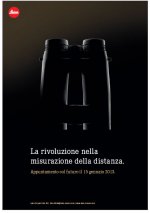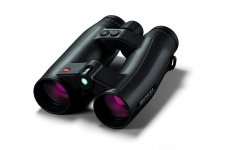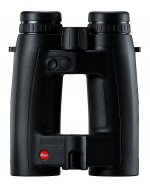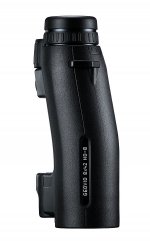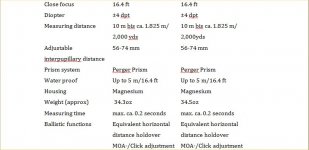Waiting to see the press release, but in the meantime came across these pics...
Allendale, NJ: Leica Sports Optics announces the newest in its line of laser rangefinder binoculars, the Geovid HD-B. Truly a game-changer, the Geovid HD-B laser rangefinder binoculars once again affirms Leica’s leadership stature as a category innovator.
Considerably more evolved than its competitors, the Geovid-HD B contains advanced ballistics technology enabling users to add/create their own custom ballistics info for their specific weapon as well as class-leading ranging abilities.
The newly developed ballistic function ABC™ (Advanced Ballistic Compensation) provides the proper aim point for the hunter and shooter. The Geovid HD-B’s integrated, highly precise ballistic processor can instantly gather and analyze the ballistic information with one touch of the button, giving accurate information for the correct hold over, turret adjustment or drop down reticle aiming point. When calculating the trajectory, the distance, angle, temperature and air pressure are all taken into account.
Twelve ballistic curves representing most of the trajectories of modern hunting cartridges are programmed in the system. Plus, an integrated microSD card slot, located inside the battery housing, allows the hunter to program and save personal ballistic data for his or her cartridge/rifle combination. This revolutionary option allows the hunter to input ballistic data based on his or her cartridge & rifle. Different ballistic information data sets can be saved on separate microSD cards for multiple cartridge/rifle use. The result is extremely precise and accurate ballistics information. Within only 0.2 seconds, the Leica GEOVID HD-B 42 displays all of the necessary information for an accurate shot, especially with steep inclinations and at longer distances.
The ballistic system ABC™ allows for relevant data to be accessed for the various types of hunting and shooting:
• For hunters using a classical reticle in their riflescope, the Leica GEOVID HD-B 42 shows, in addition to the measured distance, the holdover in inches or centimeters.
• For hunters using ballistic reticles there is information available to display the equivalent horizontal range – as for all uses it automatically takes into consideration the angle, the temperature and the air pressure.
• Hunters who use the calibrations on the fast reticle-adjustment system for impact point correction can receive holdover in ¼ MOA so you know how many clicks are necessary.
For more than 20 years, Leica has been renowned as the pioneer of laser range finding products. In 1992, Leica captured the hunting community’s attention with the introduction of the first commercially available laser rangefinder, the Leica 7x42 Geovid BD. Now Leica is continuing its success story by introducing the next generation of the popular Geovid laser range finder binoculars. With its fully programmable ballistics capabilities and class-leading ranging distance, the new Geovid HD-B exemplifies Leica’s drive behind the development of this category with the most versatile integrated ballistics system and greatest ranging capability of any laser rangefinding binocular on the market today.





